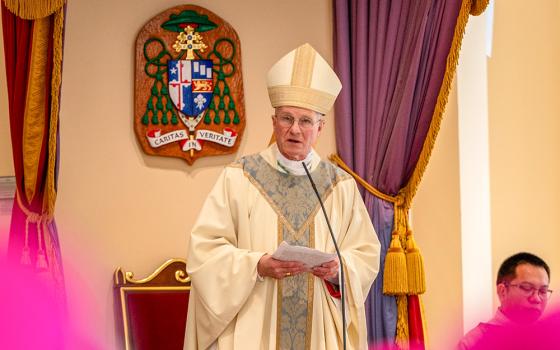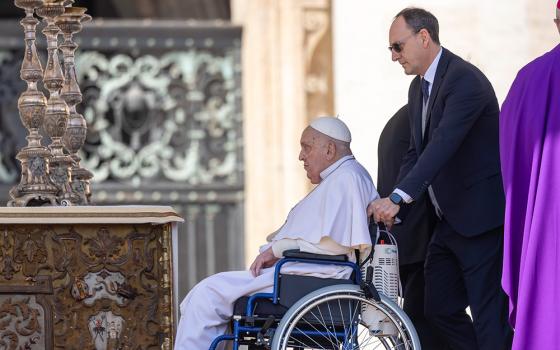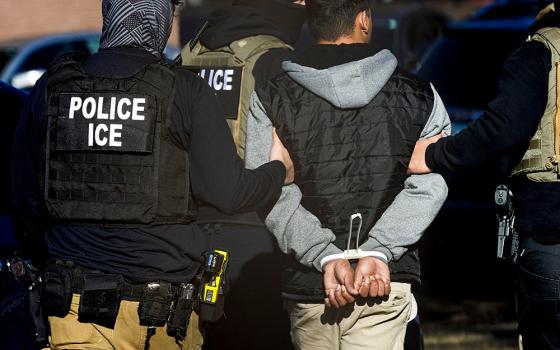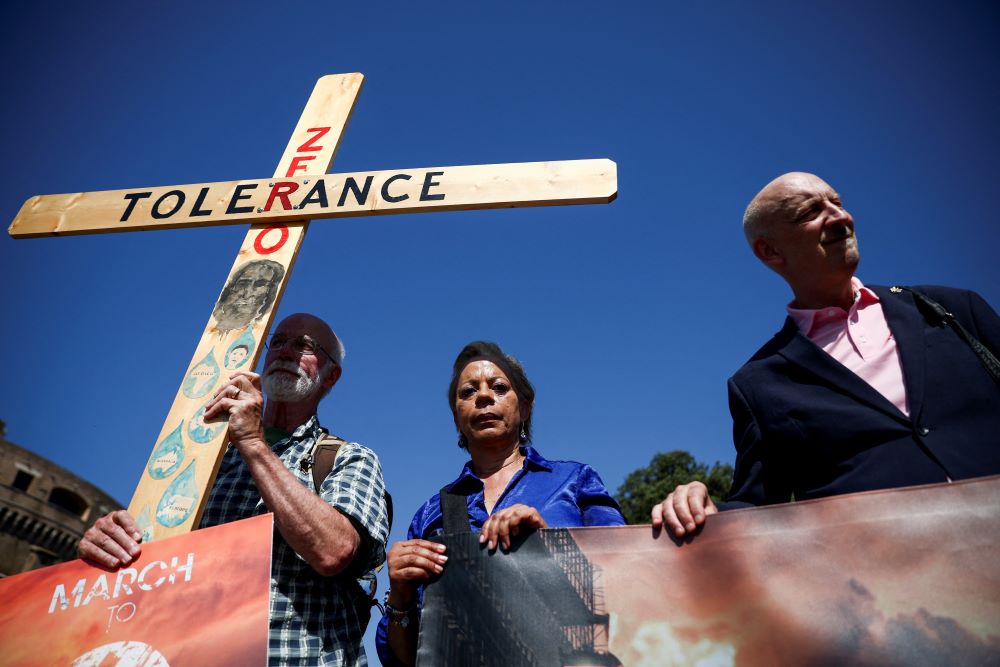
dvocates of zero tolerance for clergy sexual abuse including Peter Isely, right, Tim Law, and Denise Buchanan, attend a march with survivors of clergy sexual abuse and activists near the Vatican in Rome Sept. 27, 2023. (OSV News/Reuters/Guglielmo Mangiapane)
Sante Fe, New Mexico, Archbishop John Wester is facing an unusual new legal challenge. It has attracted little news coverage. It does not allege clergy sex crimes against children.
But I strongly suspect that it has sent plenty of shivers up the spines of Catholic officials across the country. And I predict that it will inspire other similar cases soon. Here's why.
For more than 20 years, in the wake of the horrific 2002 revelations of clergy sex crimes and cover-ups that began in Boston and soon spread across the country, bishops have apologized repeatedly. More significantly, they've also made a great many promises.
For the most part, little attention has been paid to whether or not those promises, especially the ones made in legal settlements, have been kept.
That's what's happening in New Mexico.
Those of us who care about vulnerable kids and wounded adults believe that any serious abuse reforms must be forced on Catholic officials.
Though media attention to the abuse crisis began to wane in the 2010s, by 2017, two dozen dioceses had been pressured into reluctantly revealing and posting on their websites the names of "credibly accused" child molesting clerics. That September, Wester then finally also took this minimal but long-overdue step, listing 74 such priests, brothers and deacons.
Like his brother bishops, Wester unilaterally decided which proven, admitted and "credibly accused" offenders' names to disclose.
(From the outset, controversy surfaced over which men Wester chose to omit from his list.)
The following year, New Mexico's attorney general executed a search warrant for church abuse records.
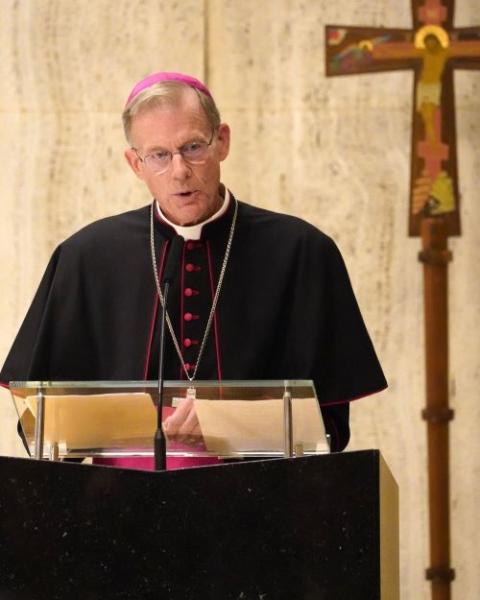
Archbishop John Wester of Santa Fe, New Mexico, seen in a Sept. 12, 2022, photo, has been accused of violating agreements the diocese made in settling its bankruptcy case. (OSV News/Gregory Shemitz)
Weeks later, again like dozens of his clerical colleagues, Wester cited dozens of ongoing lawsuits as the reason his archdiocese was filing for Chapter 11 bankruptcy protection.
That process was finally resolved in 2022.
But now, as NCR reported in April, an experienced victims' attorney argues that when Wester settled the bankruptcy case, he committed to several non-economic concessions, including giving up unilateral control over which alleged abusers are put on the archdiocesan "credibly accused" list.
In that settlement, Wester committed to listing on his website all the accused offenders who were identified during Chapter 11 proceedings — even those against whom allegations were deemed "not credible" or "unsubstantiated" by church officials — according to Levi Monagle, who has represented dozens of clergy sex abuse victims.
Monagle also asserts that more than 50 clergy members are missing from Wester's list under that category.
So on behalf of a woman who says the priest who assaulted her is still basically still being hidden by Santa Fe church officials, Monagle went to court arguing that Wester is violating his bankruptcy deal.
Women place ribbons and messages of support for those who have suffered abuse on the railing outside the Cathedral of St. Joseph in Wheeling, West Virginia, April 7 as part of LOUDfence, a campaign of awareness and support for victims of abuse that began in England. (OSV News/The Catholic Spirit/Colleen Rowan)
Regardless of the final outcome of Monagle's Feb. 20 motion, it must be worrisome to prelates across the U.S. Why?
Because if there's anything that bishops fear deeply and fight aggressively, it's losing their control over their dioceses and their secrets.
Monagle's argument is unusual but not unprecedented. A handful of times, bishops have faced similar litigation.
Perhaps the most noteworthy case in which victims charged a church official with breaking his promises took place in Kansas City, Missouri. The result: a stunning victory for the survivors.
In 2008, 47 clergy abuse victims settled their civil cases against that diocese for $9.95 million. As part of the deal, then-Bishop Robert Finn agreed to 19 non-monetary commitments, "such as establishing victim advocacy programs, immediately reporting any abuse or suspicion of abuse to law enforcement" and other moves designed to better protect children.
But barely three years later, 44 of those same victims sued Finn a second time, charging the diocese with "breach of contract" for breaking those pledges.
In 2014, an arbitrator sided with the victims in that case, ruling that Finn and his staff violated five parts of the 2008 settlement, "putting children in danger," according to The Kansas City Star.
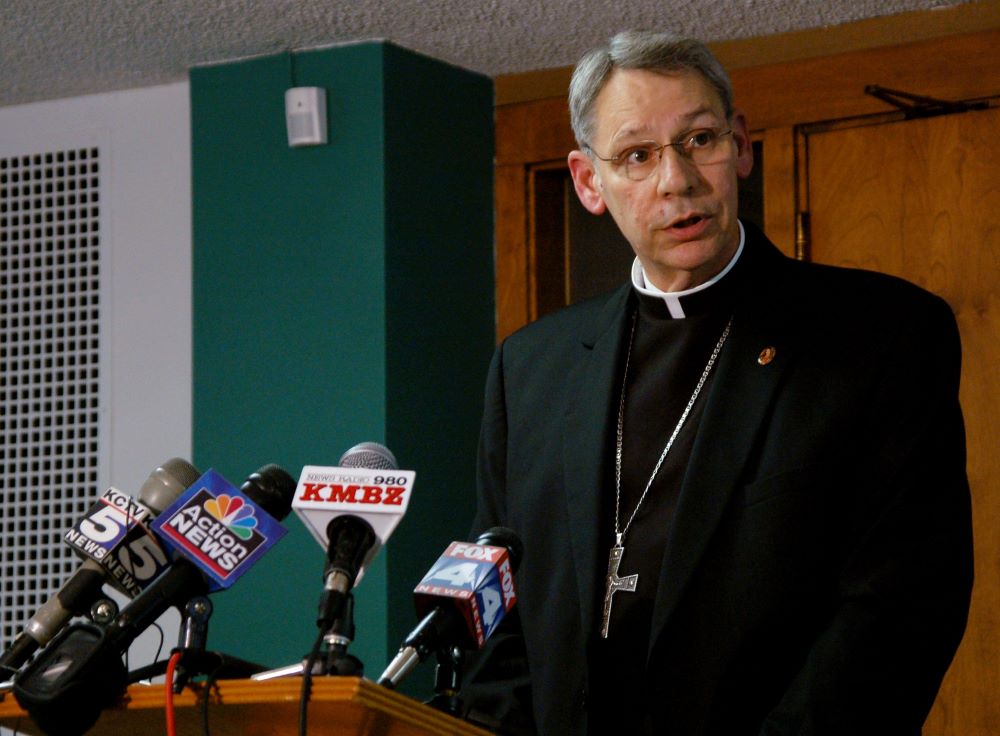
Then-Bishop Robert Finn of Kansas City-St. Joseph, Missouri, speaks during a press conference in Kansas City Aug. 20, 2008. Finn announced a $10 million settlement with 47 victims of sexual abuse involving 12 clergy and former clergy. (CNS/The Catholic Key/Joe Cory)
The result: Finn and his diocese had to pay $1.1 million to the victims.
In response to this startling outcome, many church officials began settling abuse cases only with money, rebuffing victims' efforts to win tangible child safety and abuse prevention measures.
But in recent years, the pendulum has begun to swing back and once again, victims, attorneys and other parties have successfully pushed for and won formal commitments from the church officials that they will take new and more specific steps to prevent and expose clergy sex crimes.
Why so many commitments?
For one thing, over the last decade, there have simply been more and more abuse settlements.
How many settlements? It's tough to estimate. But keep these facts in mind:
- About 25 attorneys general are investigating or have investigated dioceses and religious orders' handling of those who have committed or concealed child sexual abuse. Some have ended with formal settlement agreements.
- About 40 church entities have sought federal bankruptcy protection, including 12 in the last five years. Again, some have ended with settlement agreements.
- About 200 church entities — roughly 160 dioceses and 40 religious orders — have publicly posted "credibly accused" abusive cleric lists. In some states, attorneys say these promises — "Here are all of the clerics who face or faced substantiated abuse reports" — can be legally construed as binding agreements, especially if some names are in fact arbitrarily or unfairly left off such lists.
- 25 states have adopted civil "window" legislation, enabling anyone who was sexually violated at any time in any setting to sue those who committed or concealed the crimes. These laws have enabled thousands of survivors who couldn't sue earlier the chance to do so now, regardless of how long ago they were victimized. Thousands of those lawsuits have settled.
So now, many more commitments have been made by many more bishops to a much wider set of parties.
That's one reason we'll likely see more legal actions like Monagle's in New Mexico — based not on sex crimes by clerics but on broken promises by bishops.
Advertisement
But there's another reason underlying my prediction. Among survivors, attorneys and advocates, there is a growing realization that many of us have been a bit naïve. For years, many believed that church officials, no matter how recalcitrant, would eventually reform "if we hit them in the pocketbook" — that in the long term, enough costly and embarrassing child sex abuse litigation would force hide-bound bishop to reduce or even end the deeply-rooted, corrupt and unhealthy clerical culture and structure that enables horrific crimes and cover-ups to keep happening.
That notion, however, is waning among victims and their allies. (See the cases of Fr. Shawn Ratigan, Fr. Daniel McCormack, Fr. Michael Fugee, Fr. Marko Rupnik and, of course, most notoriously Theodore McCarrick).
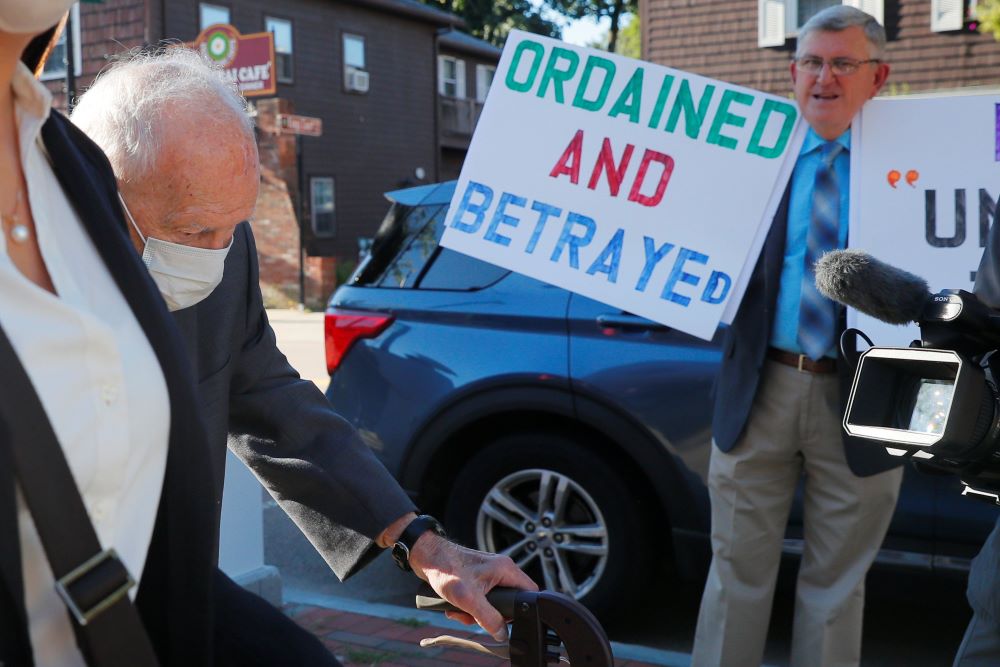
Protesters greet former Cardinal Theodore McCarrick as he arrives at Dedham District Court in Dedham, Massachusetts, Sept. 3, 2021, after being charged with molesting a 16-year-old boy during a 1974 wedding reception. (CNS/Reuters/Brian Snyder)
Instead, these days, those of us who care about vulnerable kids and wounded adults believe that any serious abuse reforms must be forced on Catholic officials. This usually starts in the secular courts and ends in explicit, binding settlement agreements that spell out tangible measures the hierarchy must take to ensure prevention, healing, transparency and justice.
The bottom line: Now, soon and down the road, more victims may be able and willing to sue bishops not for the betrayals by predatory priests, but for the betrayals of bishops themselves, not for illegal sexual acts but illegal perfidy like "breach of contract."
Until now, little attention has been paid to whether or not abuse-related promises made by the U.S. church hierarchy (especially those made in legal settlements) have been kept.
That however, is finally changing. Prelates' pledges about abuse are very likely to get much more carefully scrutinized in the years ahead.

